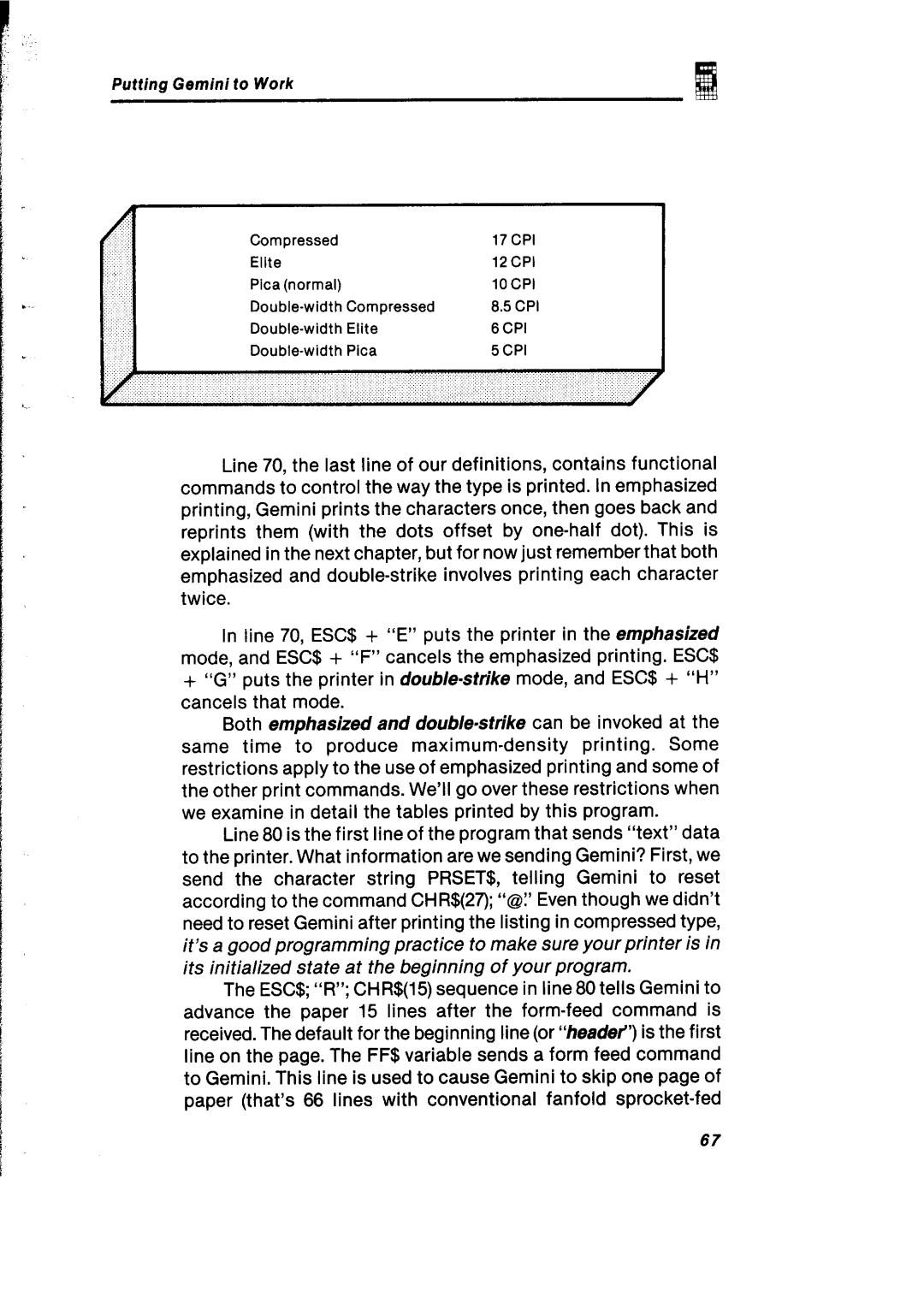
Putting Gemini to Work
Compressed |
| 17 CPI |
Elite |
| 12CPI |
Pica (normal) |
| 10 CPI |
Compressed | 8.5 CPI | |
Elite | 8CPI | |
Pica | 5CPI |
Line 70, the last line of our definitions, contains functional commands to control the way the type is printed. In emphasized printing, Gemini prints the characters once, then goes back and reprints them (with the dots offset by
In line 70, ESC$ + “E” puts the printer in the emphasized mode, and ESC$ + “F”cancels the emphasized printing. ESC!§
+“G” puts the printer in
Both emphasized and double-strike can be invoked at the
same time to produce
Line 80 is the first line of the program that sends “text” data to the printer. What information are we sending Gemini? First, we send the character string PRSET$, telling Gemini to reset according to the command CHR$(27); “@1’Even though we didn’t need to reset Gemini after printing the listing in compressed type, it’s a good programming practice to make sure your printer is in its initialized state at the beginning of your program.
The ESC$; “R”;CHR$(15) sequence in line 80 tells Gemini to advance the paper 15 lines after the
Y
67
I
